The #30minworms initiative
The #30minworms initiative is a range of activities to develop soil science skills in the community. Earthworms are ecosystem engineers and here we provide top tips to determine local populations.
For information about how to survey your earthworms you can:
1. Watch this one minute ‘how to’ guide for #30minworms sampling
2. Download the survey method to use in Spring or Autumn
3. Download the photo template to record your earthworms
About Earthworms
The early bird catches the worm?
Earthworms are an important food source for our wildlife – they can be the only food source at certain times of the year and have a high protein content. Since 2017, through public and charity funding, we have been co-developing an earthworm survey with farmers, advisors and the scientific community because of the critically important trophic position of earthworm.
[Photo: sippakorn yamkasikorn]
Earthworms are soil heroes! Check this cool video to find out why.
[Video by Tinmouse Animation Studio]
If you chop a worm in half, do you get two worms?
No, in fact earthworms are very sensitive to soil disturbance – whether spade or machine. Many earthworm species feed on leaves and straw at the soil surface – tillage buries this source of food and shelter. Over time this changes the types of earthworms live in the soil.
There is more than one type of earthworm
Earthworms are categorised into three groups based on their burrowing and feeding behaviours. These are:
- Surface dwelling (epigeic)
- Topsoil dwelling (endogeic)
- Deep burrowing (anecic) earthworms.
The epigeic and anecic worms feed on leaves and straw at the soil surface and particularly vulnerable to predation by beetles, birds, foxes, hedgehogs…. and sensitive to soil disturbance from our actions.
[Photo: Anna Feeney, UKCEH]
How to take good photographic records of worms
Good soil science photography differs from normal digital photography. Developing these skills transforms single-use snapshots into valuable biodiversity information. Apply the three principles of observation science to create information-rich images:
- Size of observation
- Scale bars to assess earthworm size
- Accurate colour
Compare the two pictures below:
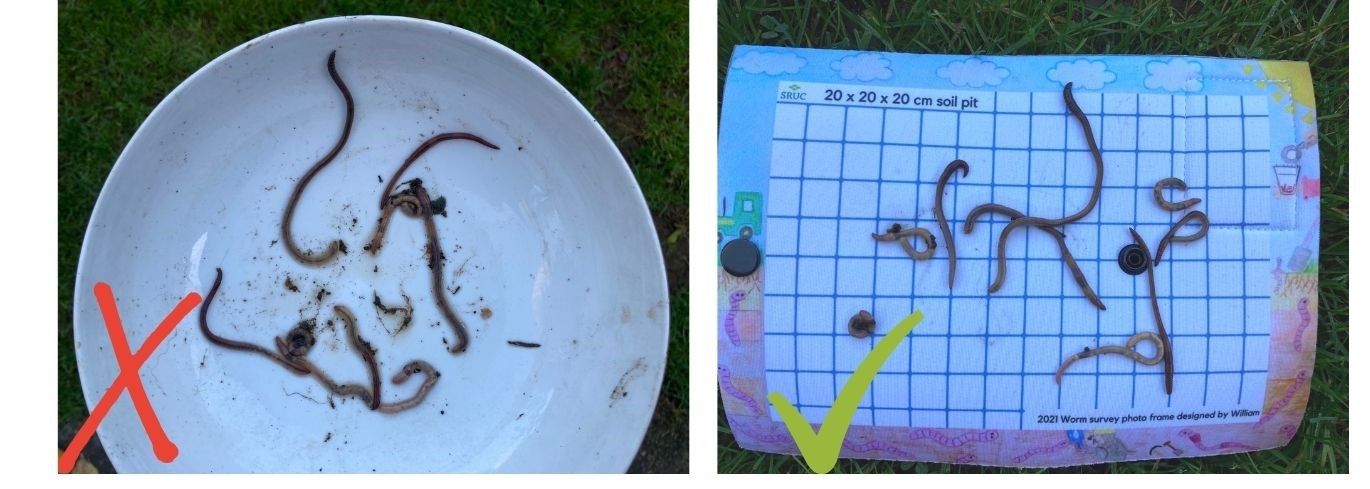
The single-use snapshot on the left shows ‘some worms’. In comparison, the image on the right is information rich. It is possible to estimate that there are 225 earthworms per m2 with an abundance of topsoil (epigeic) worms. This is because the worms are well-photographed using a grid that carries useful information to put the results in context.
The photo template
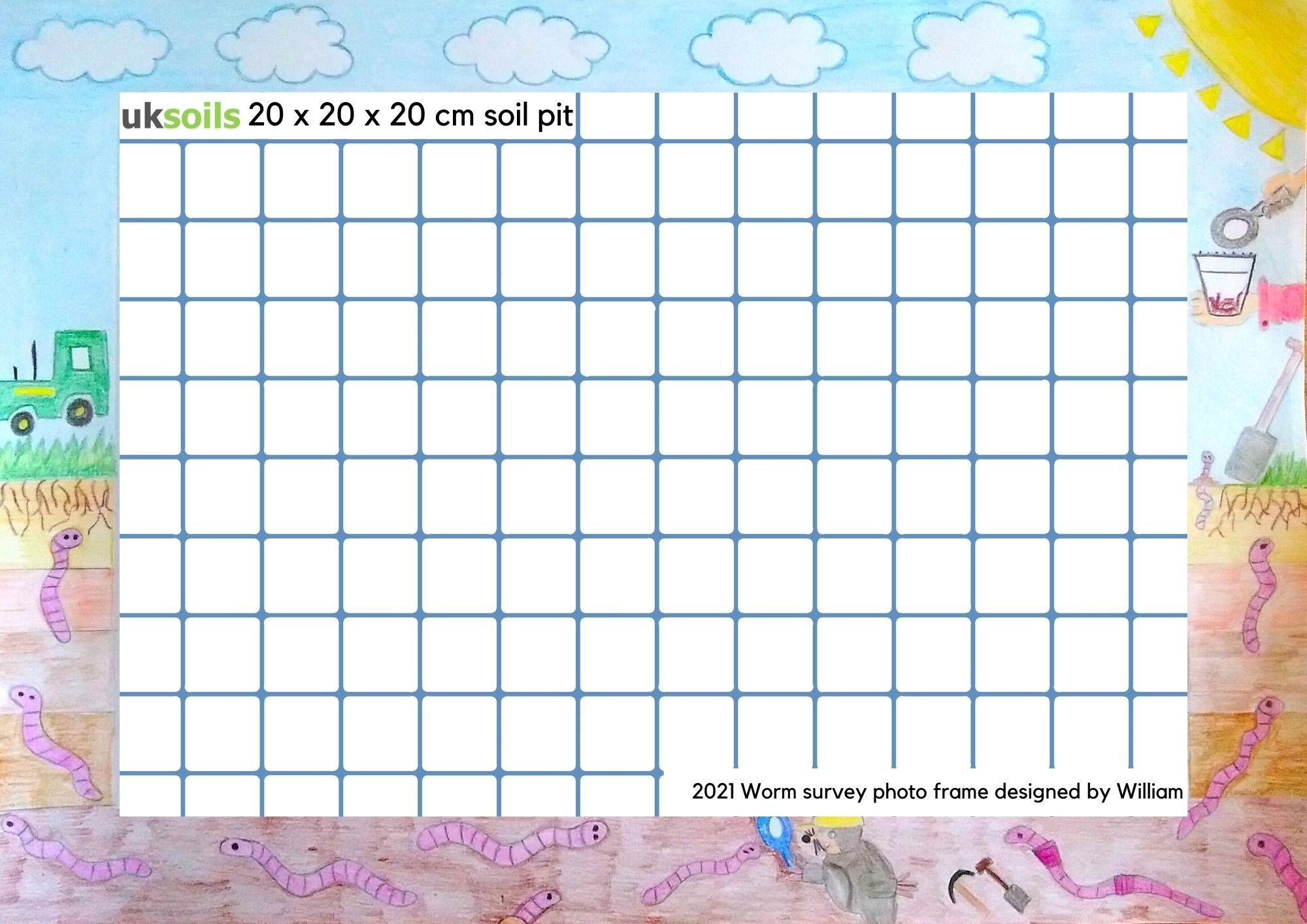
Photo template for taking information-rich photos of earthworms
The template was co-created by scientists, farmers and their families to capture and share earthworm information. It has three key features of observation science: size of the soil pit, scale grid and colour correction border designed by William (winner of the uksoils 2021 Under Your Feet competition) to create information rich images.
Download the standard photo template for earthworms.
Wash earthworms with water before taking a photograph
Earthworms are usually muddy. Take a water bottle when you are sampling as they need to be rinsed with water to see identifying features (presence of a saddle and colour). Earthworm photographs which do not show identifying features (such as on the left) are unsuitable for biodiversity monitoring.
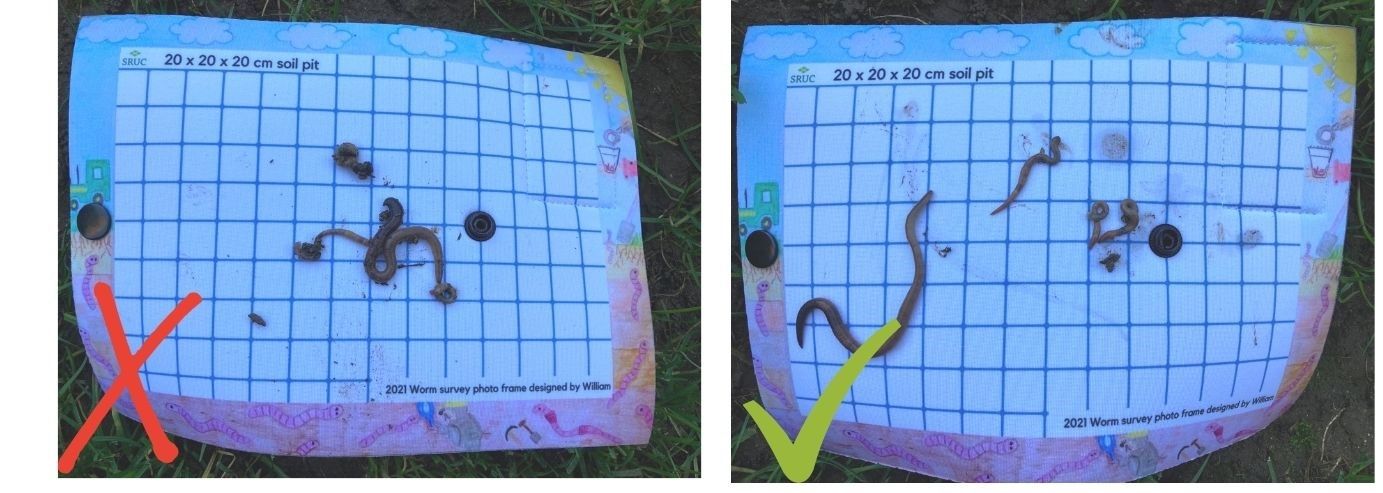
The three principles of observation science in more detail
1. What is the size of your observation?
Earthworms are best surveyed in Autumn and Spring when they are most active. The size of the soil pit is essential information to include in your image. Why? This means the image can be converted into earthworms per m2 for sharing and comparing results. The standard soil pit size is 20 x 20 x 20 cm.
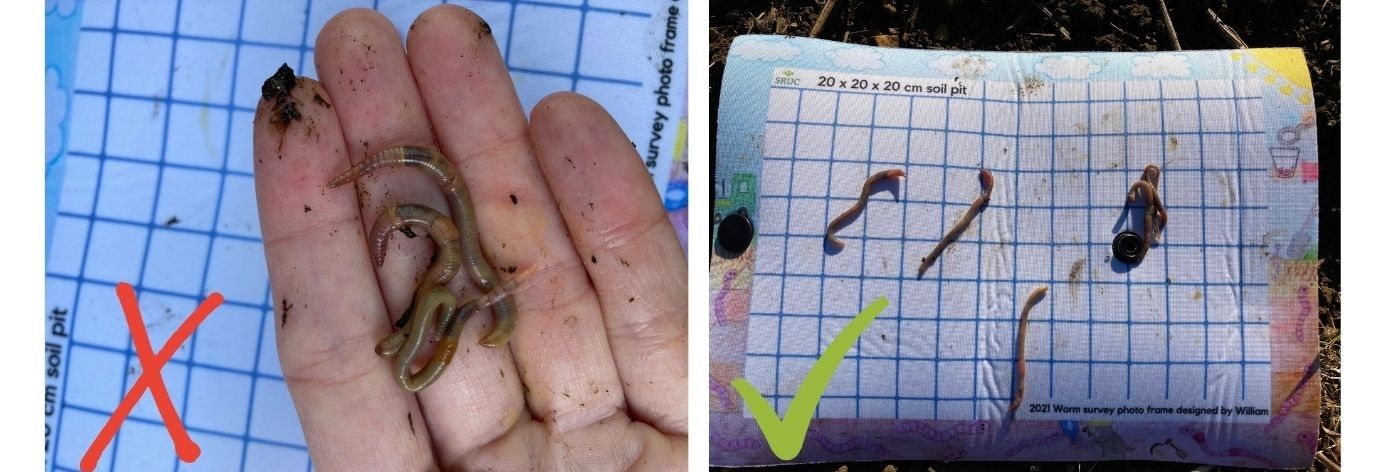
2. Scale bars
Include scale bars in your image because the size of the earthworm(s) are important to the identification of earthworms to the ecological group level. Close-ups or macrophotography make nice single-use images, but are not suitable for recording ecological group information.
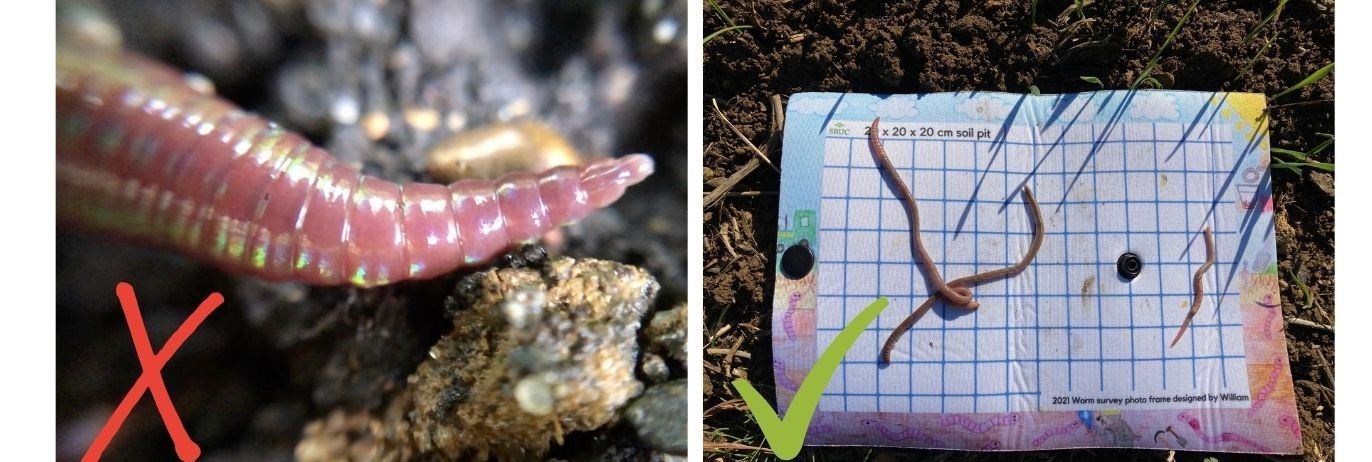
3. Colour
Do not use filters for earthworm photography because their natural pigmentation is used to identify earthworms to the ecological group level.
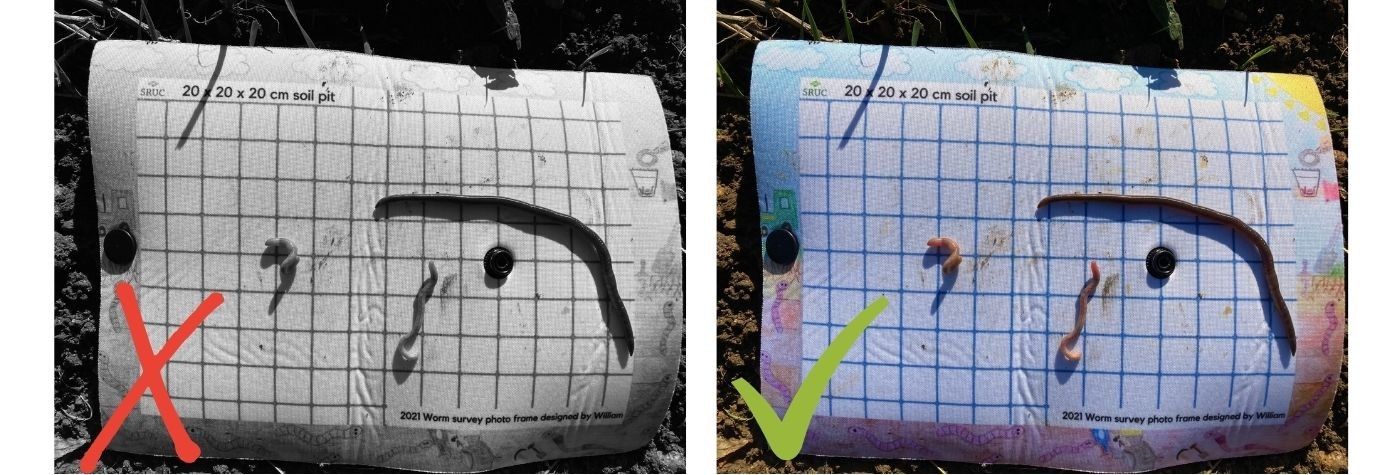
Test your earthworm identification skills
It is a good idea to practice your identification skills before heading out to survey. Our quiz helps you practice using real field photographs. Can you identify an adult earthworm? Can you distinguish topsoil worms from deep burrowers?
Why not try the earthworm identification quiz now? (Quiz opens in a new window).
uksoils innovations to support soils monitoring
The biggest challenge for people taking part in #30minworm surveys is the identification of earthworms to the ecological group level. We have listened to the feedback and created a prototype fabric wrap as an aid to earthworm photography. This handy item has the standard photo template printed on one side. It wraps around the handle of a spade or fork and is fastened with a press stud, meaning you always have it to hand.
Farmers and advisors have tested the prototype; see their feedback.
This innovation helps to create good links to scientists who can verify the results by checking the standardised images.
Can I identify earthworm species?
This is challenging and digital photography is not suitable for distinguishing between the 33 earthworm species that are found in the UK. Instead, it requires laboratory analysis. The Earthworm Society has more information about this.
Developing ecological skills using digital media
Use these resources to explore earthworms in more detail.
- Video: one minute ‘how to’ guide for #30minworms sampling
- Survey guide: The #30minworms initiative has so far supported people to study over 30,000 earthworms living in farmlands. Download the co-developed survey method to use in Spring or Autumn.
- Video: Check out farmer Olly Harrison ('OllyBlogs') counting earthworms on his farm
- Video: Earthworms feeding on and collecting straw. Watch earthworms build their middens in fields and forests.
For more information about earthworms, visit Worm Survey.
[All photos on this page by Jackie Stroud unless otherwise indicated. Banner photo by A. Sier]